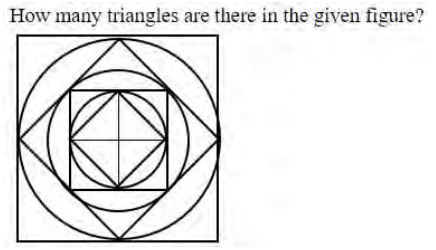Start learning 50% faster. Sign in now
Given statements: K < L; M = N; L > O ≥ M On combining: L > O ≥ M = N; K < L Conclusions: I. K < M → False (as K < L, L > O and O ≥ M → there is no clear relation between K and M) II. O = N → False (as O ≥ M = N → O ≥ N) Hence, none of the given conclusion is true.
Statement:
A. Some fish are birds.
B. No cat is bird.
Conclusion:
I. No bird is cat.
II. Some birds are fish.
Study the given pattern carefully and select the number that can replace the question mark (?) in it.
First row- 9, 21, 124
Second ro...
Select the set in which the numbers are related in the same way as are the numbers of the following sets.
(NOTE: Operations should be performed o...
Select the letter-cluster from among the given options that can replace the question mark (?) in the following series.
HDMS, OVVI, VNEY, CFNO, ?

In a certain code language, ‘PAINT’ is written as ‘ODYTN’ and 'BRUSH' is written as 'CMMOZ'. How will ‘HOUSE’ be written in that language?
If the given sheet is folded to form a cube, which of the given figures are possible?
(The elements are shown to indicate the sides only.)
Three statements are given, followed by three conclusions numbered I, II and III. Assuming the statements to be true, even if they seem to be at varian...
P, Q, R, S, T, U and V are standing in a queue.
i. T is just behind P.
ii. V is just in front of Q, who is not the last person.
iii...
Six persons A, B, C, D, E and F have one different cars namely C1, C2, C3, C4, C5 and C6 (not necessarily in the same order). Each also likes a differe...